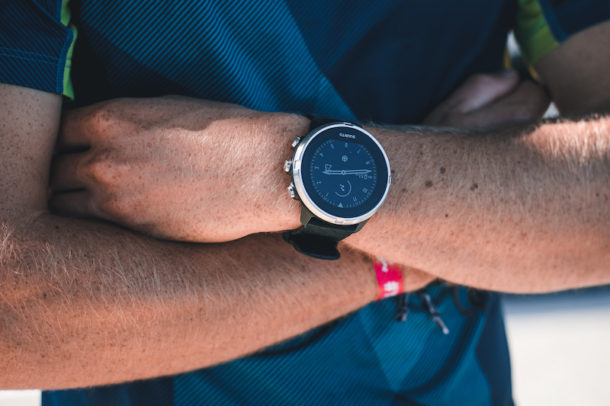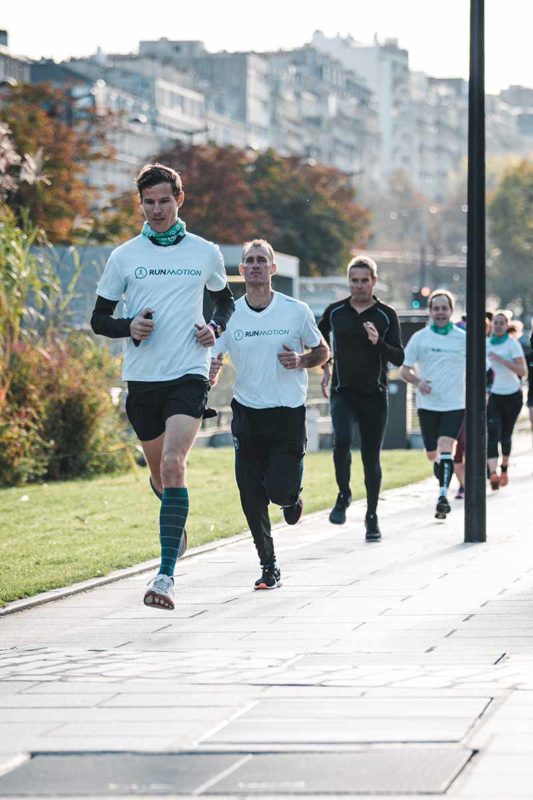
Following every marathon, it’s common to encounter thousands of runners puzzled by their GPS devices showing distances like 42.8 or even 44 km, rather than the official marathon length of 42.195 km. Runners frequently report similar discrepancies in half marathons (21.1 km) and other standardized races. This phenomenon inevitably raises the question: should we question the accuracy of the distances recorded by our watches? The answer is yes, and here’s why.
Contents
How is a marathon or a road race measured?
Since 1921, the official distance of a marathon has been set at 42 kilometers and 195 meters. To ensure this precision, race organizers seeking course certification rely on official measurers. These measurers meticulously verify the course distance not once, but twice, to certify it.
The primary tool used in this process is the Jones Counter, a small, cogged wheel affixed to the front wheel of a bicycle. Each Jones Counter undergoes rigorous calibration to guarantee its accuracy, which is remarkably precise, up to 0.1%.
To ensure every marathoner covers exactly 42.195 km, measurers incorporate this slight margin of error (0.1%) into their calculations. Consequently, race organizers mark the finish line not at 42.195 km, but slightly further, at 42.237 km.
This means that every marathon course officially measures between 42.195 km and 42.279 km. Even in the least favorable scenario, if a runner covers 84 meters more than the minimum, this would only add between 12 and 20 seconds to their final time, depending on their running speed.
For major marathons, such as the Paris Marathon, the distance is certified by international measurers, making a double measurement error almost an impossibility. Furthermore, officials conduct a third, additional measurement to definitively certify a record when an athlete sets a world record, of course, pending a negative doping test.
Could the official measurer have made a mistake?
In reality, instances of distance errors in races are exceedingly rare. A notable example occurred during the 10 km Foulées de Vincennes in 2020. Indeed, a signposting error led to a miscalculation. Similarly, in the 10 km race of Annecy 2021, a last-minute course change, which wasn’t officially remeasured, resulted in an incorrect distance.
However, it’s important to emphasize that the official distance is accurate in over 99% of cases. While routing errors can happen, particularly in smaller marathons, they are fortunately uncommon. Such discrepancies usually arise if the race route on the day of the event differs slightly from the one that was officially measured a few weeks prior.
Why does my GPS indicate my marathon was 41 or 43 kilometers?
In most international marathons, you’ll find a line on the ground marking the ideal trajectory. It’s this very line that official measurers follow to ascertain the course distance. Even in the absence of a visible line, measurers stick to this ideal trajectory.

Why, then, might your GPS show you ran 41 or 43 kilometers instead of the official marathon length? A marathon runner often deviates from this ideal line due to the dense crowd of other participants. Also, when veering towards refreshment tables that are set away from this line. While such deviations can add a few extra tens of meters to the total distance, they rarely exceed 42.5 km.
The crux of the discrepancy lies in the precision of GPS technology. Despite the investment in a high-end GPS watch, it’s important to acknowledge that the best achievable accuracy is around 1%. This margin of error is consistent across different brands and models.
A 1% error translates to approximately 10 meters per kilometer, which is relatively precise (amounting to a maximum time error of about 2 seconds per kilometer). However, over the course of a half-marathon, this error can cumulatively add up to about 210 meters. In a full marathon, it could result in an additional 420 meters.
How buildings, turns, or forests can disrupt GPS signals
In densely built-up areas like New York, where tall buildings are abundant, GPS signal reception can be significantly disrupted. This interference is not limited to urban settings: dense forests, passing under bridges, or through tunnels can similarly affect signal quality.
Moreover, a course with multiple turns can lead to GPS devices ‘cutting corners’, even when set to record a point every second.
Consequently, the error margin of GPS devices, particularly in tracking applications, can be as high as 5% – which equates to 2 kilometers over a marathon distance! This means that while one may virtually run slightly less or more, in reality, the official distance is accurately covered.
Interestingly, it’s possible for a watch to display exactly 42.2 km, with errors potentially canceling each other out over the entire route.
In conclusion, every half-marathoner indeed covers the official distance of 21.1 km, and a marathoner covers 42.195 km. However, each runner might run up to an additional 300 meters in a marathon due to the crowd preventing them from following the ideal trajectory. It might be difficult to accept, but in 99% of cases, the discrepancy in distance measurement stems from the GPS watch, not from the race organization. 😉